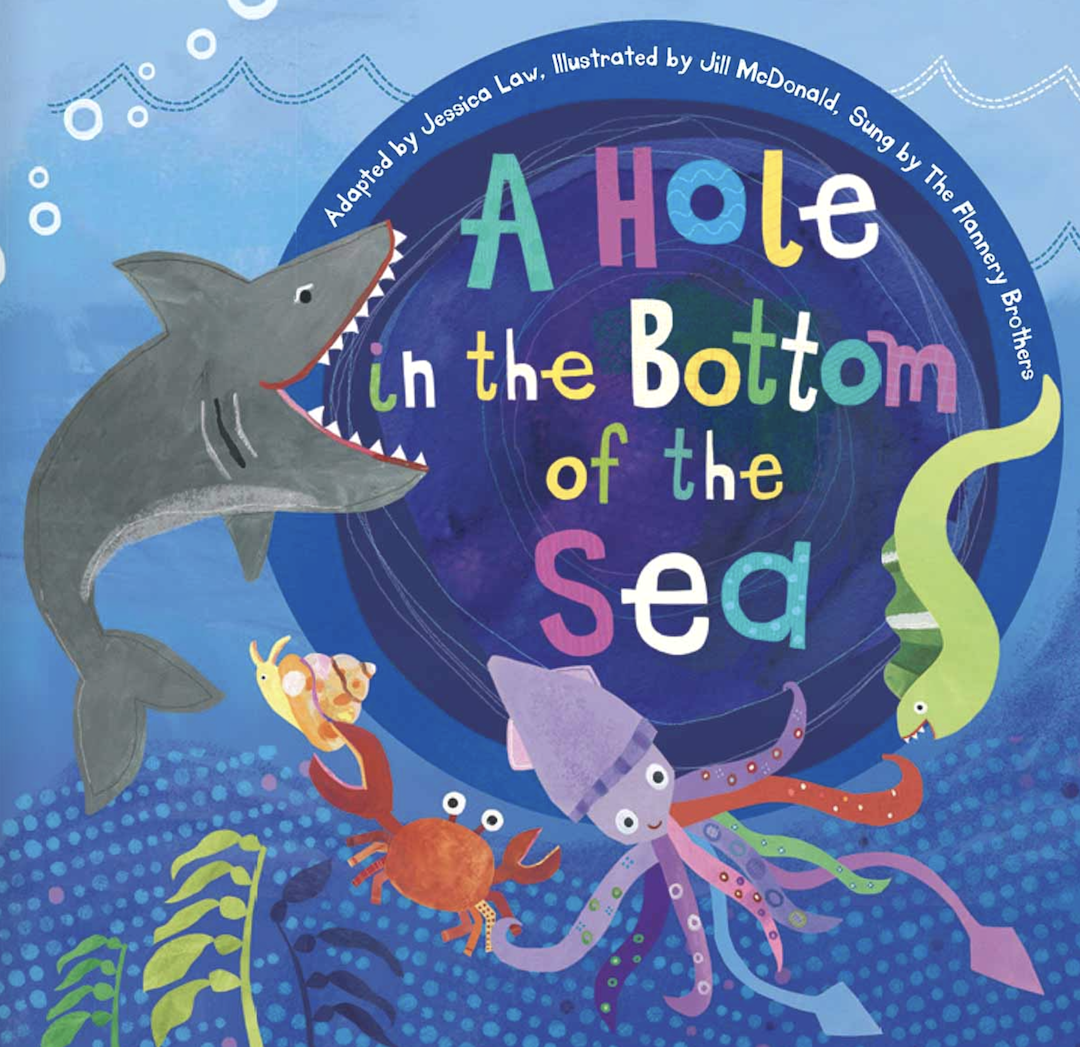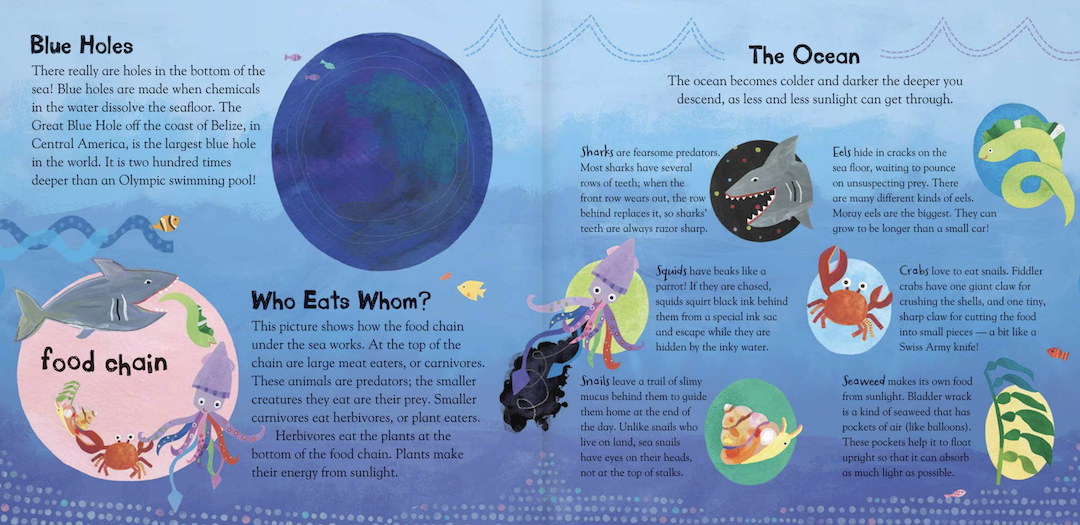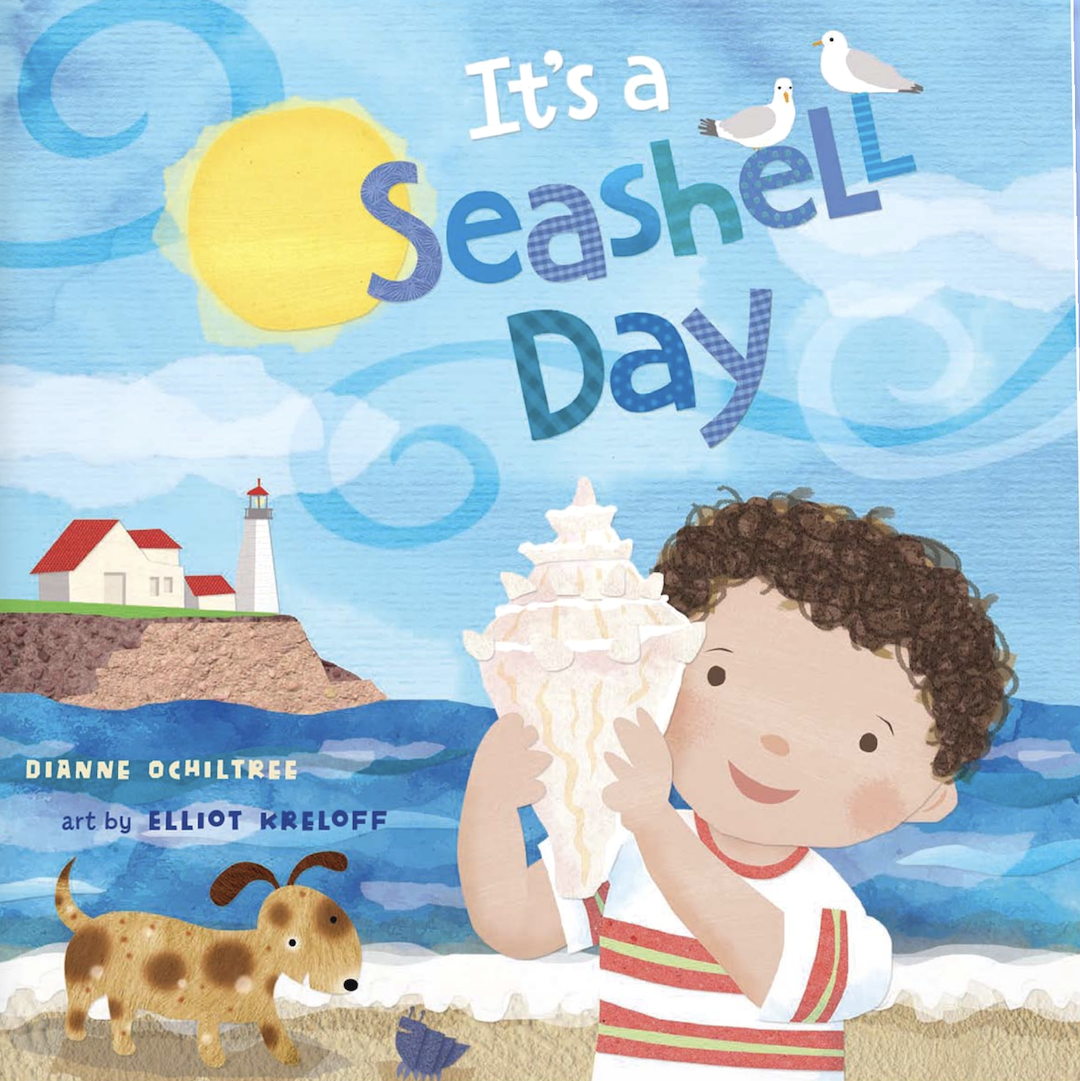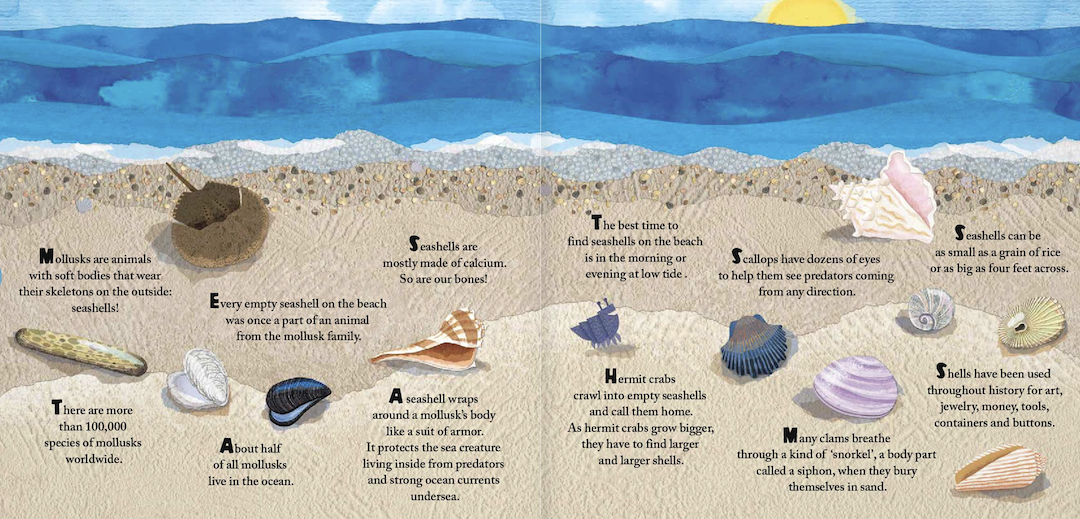The Seashell Playdatebox wouldn’t be a complete Playdatebox without some great ocean read-aloud book ideas you can enjoy with your grandkids. Two of our recommended ocean books are, It’s a Seashell Day by Dianne Ochiltree with art by Elliot Kreloff, and A Hole in the Bottom of the Sea, Adapted by Jessica Law, and Illustrated by Jim McDonald. The Seashell Playdatebox includes some practice in recognizing and creating patterns. Both of these books are great options for opening up a conversation about what patterns are. Learning a pattern helps us remember a concept. Recognizing and practicing patterns is critical for developing great math and literacy skills.
A Hole in the Bottom of the Sea

One of the most delightful “singable” ocean books I’ve invested in as a grandmother, A Hole in the Bottom of the Sea is a colorful romp through the patterns of the ocean food chain. The colors and the detail in this beautiful book will give you the full sensory experience. Every page turn is a treat! As with almost all Barefoot Books publications, there are pages at the back of the book that give additional details that will fascinate kids and grownups alike.
Recognizing Patterns in the Book: Word Patterns
You won’t need to make a big deal out of pointing out all of the patterns that are present in this book. The great thing about patterns is that as our brains mature, we discover them for ourselves. Very young children will simply enjoy the pattern in the song itself. Practice singing with them and allow them to fill in the last word of some of the repeated phrases as you point to pictures. For example, by the time you get to page 10 in the book, you could start pausing to allow your child or grandchild to fill in the word from the pattern: “There’s a squid and an eel and a ______ in the hole in the bottom of the _______. As you pause, you can point to the photo of the shark, and your child will naturally fill in the word.
This kind of practice helps kids start to associate the vocabulary word with the object. It’s the first step in learning to read a picture book. Singable books make this kind of reading practice especially fun. By the end of the book, you’ll be able to point to pictures in order of the pattern and your child will know the words to fill in.
Recognizing Patterns in the Book: The Marine Food Chain
Here’s a gentle and not-too-graphic way to talk through the idea that there is a food chain at the bottom of the sea. The shark eats the eel, eats the squid, eats the crab, eats the snail, eats the seaweed. This pattern is also emphasized in the informational content at the back of the book. You could ask your grandchild if they notice anything interesting about which animals eat which animals. While the illustrations don’t perfectly match this concept, biggest to smallest is a pattern that is easy for a youngster to recognize.

How to Read A Hole in the Bottom of the Sea as part of an Ocean Books Virtual Visit:
Ideas for Long-Distance Grandparents
 The publisher, Barefoot Books, has also produced a delightful video with audio of the text of the book. If you are reading remotely with a grandchild, this version is especially fun to sing along with. Get together over a Zoom or Microsoft Teams video chat, share your screen and sing along together!
The publisher, Barefoot Books, has also produced a delightful video with audio of the text of the book. If you are reading remotely with a grandchild, this version is especially fun to sing along with. Get together over a Zoom or Microsoft Teams video chat, share your screen and sing along together!
It’s A Seashell Day: Ocean Books for Preschoolers

Grab your shovel and your pail and follow along in this colorful book as the rhyming text guides you through a day on the beach with a young boy and his mother. Together, they discover all kinds of seashells and learn about the creatures that live inside. When I read this book with my 5-year-old grandchild, I knew we had found a winner. I looked it up because she wanted my help doing “research” for a kindergarten research project. I didn’t know kindergarteners did research projects! Kindergarten in my day meant I got graham crackers and milk. Then pretended to take a nap on a towel on the floor after recess.
But I was tickled when her Mom sent a video a few days later of her presenting her research project to her class. Together, we had created a diorama out of a recycled cardboard box and seashells she’d collected from a recent vacation. We glued her shells onto the outside of her diorama. She added some drawings she made of marine life and glued on some sand she’d brought from the beach. During her presentation, she repeated some of the facts about mollusks that she had learned from the informational pages at the back of the book.

Also a Barefoot Books publication, this ocean book includes beautiful illustrations. It’s a great message for kids about curiosity and caring for the earth. The fun facts at the back will help develop even more understanding about seashells. This is a great book to share with a child. I had a great time pulling up YouTube videos of some of the seashells from the book. The seashell is even more interesting when you can see the mollusk still living inside!

If you’d like to preview the book before sharing it, review this “Storytime Bunnies” version on YouTube. Since your own voice is a better option if you are reading remotely with your grandchild, you can always turn down the narration and read yourself, or, invest in a subscription to a service like Readeo.com. You can “bookchat” remotely and both of you can see the book simultaneously. Happy reading!
